Western movie star John Wayne frequently rode a horse to complete his cowboy image. However, he grew an affinity for one animal in particular. Wayne went out of his way to ensure that he could ride the same horse named Dollar across seven of his movies.
‘True Grit’ (1969)
L-R: John Wayne as Rooster Cogburn and Glen Campbell as La Boeuf | Silver Screen Collection/Getty Images
The first time that Wayne worked with Dollar the horse on the silver screen was in 1969’s True Grit, directed by Henry Hathaway.
A 14-year-old named Mattie Ross (Kim Darby) seeks out U.S. Marshal “Rooster” Cogburn (Wayne), a man of “true grit.” He’ll need every ounce of it on a mission to track down a hired hand named Tom Chaney (Jeff Corey) after he killed Mattie’s father.
Texas Ranger La Boeuf (Glen Campbell) joins them on the hunt, looking to bring Tom to justice for killing a Texas senator.
Wayne earned his one, and only Oscar win for his performance in True Grit. Rooster rode his horse throughout the movie, but the final showdown scene is perhaps the most memorable.
‘Chisum’ (1970)
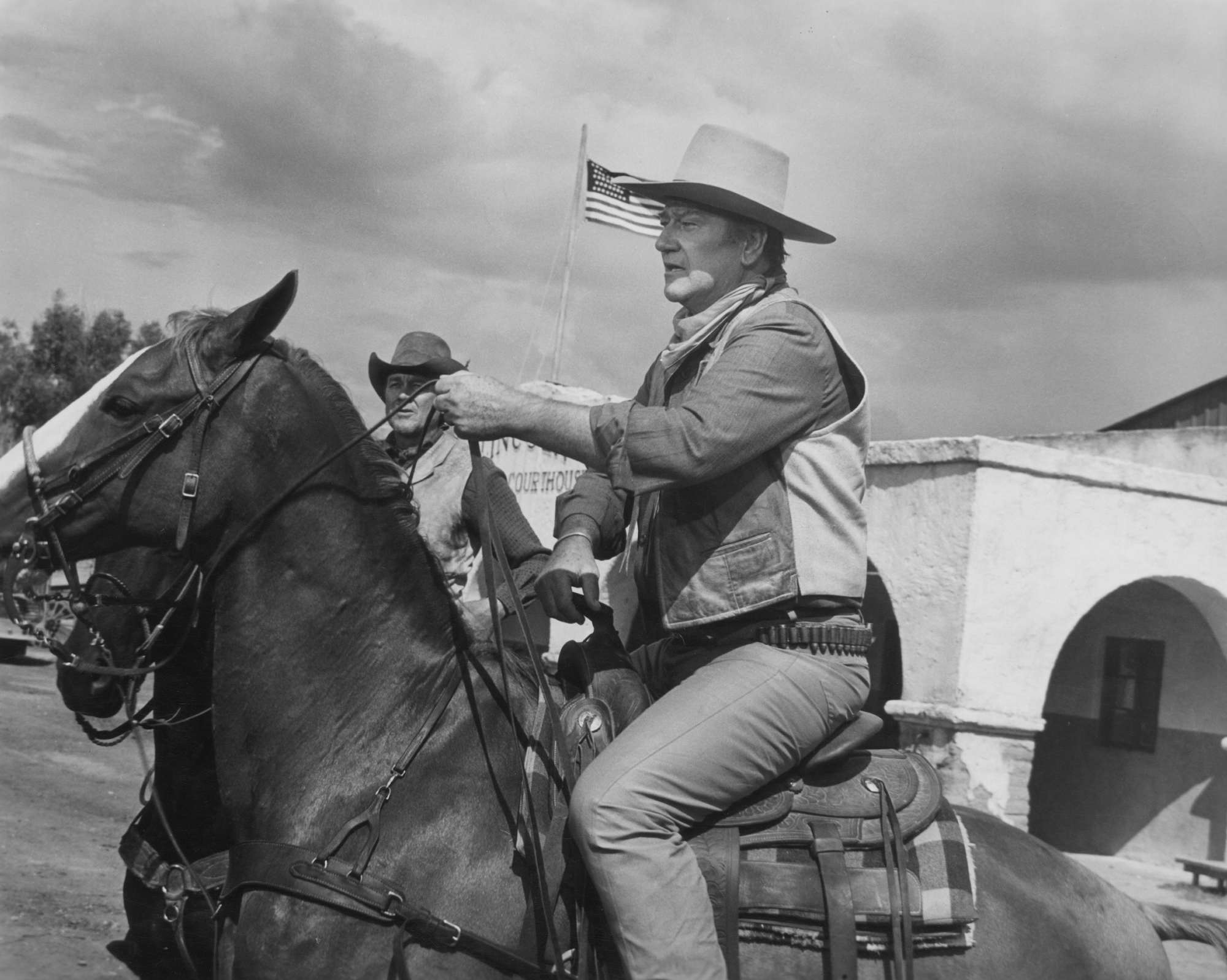 John Wayne as John Chisum | Michael Ochs Archives/Getty Images
John Wayne as John Chisum | Michael Ochs Archives/Getty Images
Set in Lincoln County, New Mexico, John Chisum (Wayne) works as a successful cattle baron. His peaceful life is about to be put on the line when the unethical Lawrence Murphy (Forrest Tucker) and his business partner, James Dolan (Edward Faulkner), purchase the majority of the land and businesses nearby.
The horses in Chisum play an important part in the story, especially in a sequence where a couple of Chisum’s men are killed, and the herd is stolen.
‘Big Jake’ (1971)
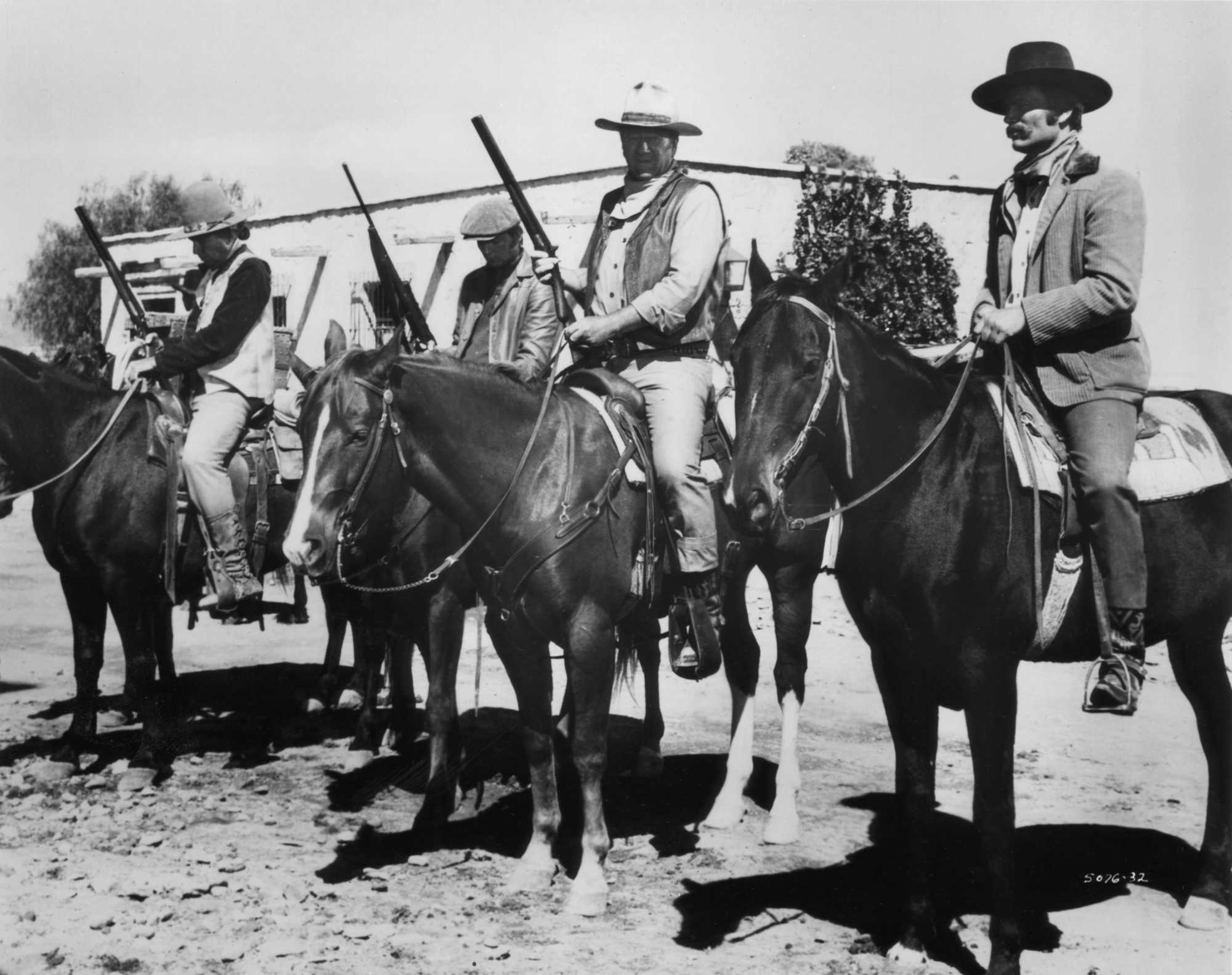 L-R: Bruce Cabot as Sam Sharpnose, Christopher Mitchum as Michael McCandles, John Wayne as Jacob McCandles, and Patrick Wayne as James McCandles | Michael Ochs Archives/Getty Images
L-R: Bruce Cabot as Sam Sharpnose, Christopher Mitchum as Michael McCandles, John Wayne as Jacob McCandles, and Patrick Wayne as James McCandles | Michael Ochs Archives/Getty Images
The villainous John Fain (Richard Boone) leads a gang of violent men to take over the McCandles Ranch. They target Jacob McCandles’ (Wayne) grandson to kidnap, demanding $1 million in ransom for his safe return. As a result, Big Jake will have to discover a way to rescue the boy.
When it comes to devising a plan, the titular hero of Big Jake wants to do things the old-fashioned way. He refuses to simply lie down and accept his fate. Wayne once again rides his horse, Dollar, to seek justice.
‘The Cowboys’ (1972)
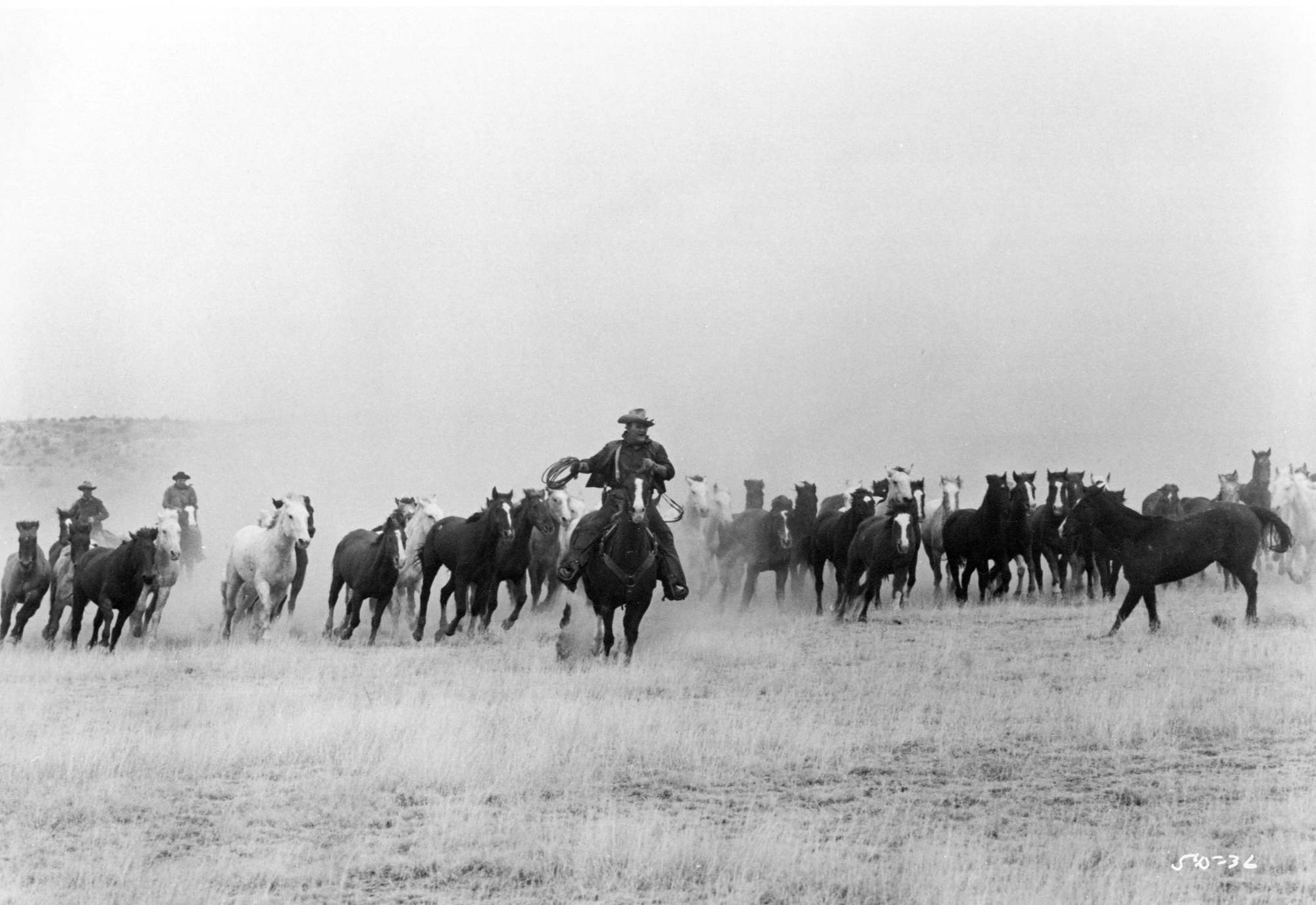 John Wayne as Wil Andersen | Michael Ochs Archives/Getty Images
John Wayne as Wil Andersen | Michael Ochs Archives/Getty Images
Wil Andersen (Wayne) is left in a difficult position when his ranch hands decide to chase the gold rush. Now an older rancher, he must find replacement drovers to help him on his 400-mile cattle drive. Wil makes the difficult decision to hire local schoolboys to get the job done.
The Cowboys is all about the horses and the rest of the animals, as they’re the mission that Wil set out to accomplish. The film is infamous for killing off Wayne’s character in a violent climactic scene, but it remains a truly memorable installment in the actor’s career.
‘The Train Robbers’ (1973)
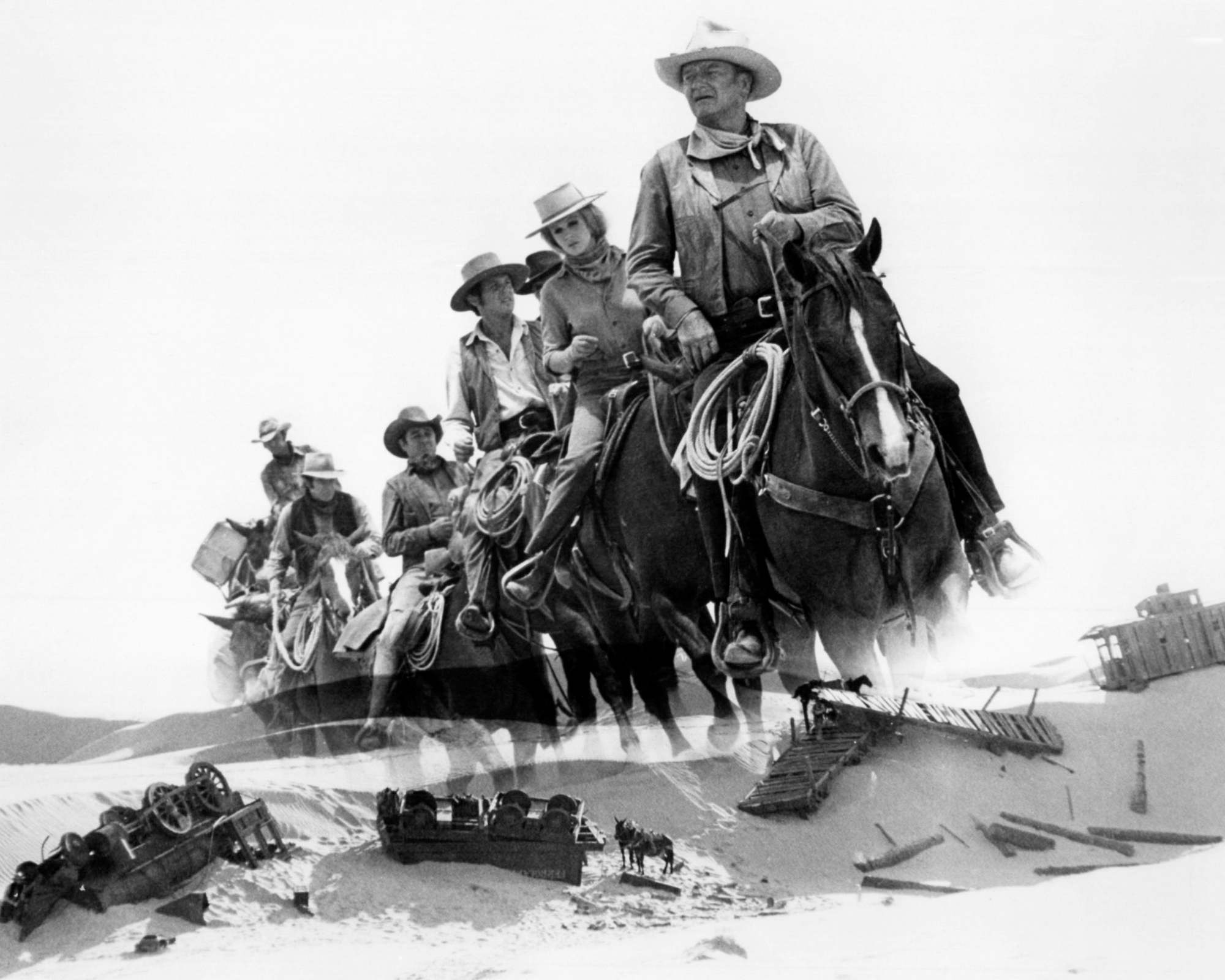 John Wayne as Lane | Silver Screen Collection/Getty Images
John Wayne as Lane | Silver Screen Collection/Getty Images
Mrs. Lowe (Ann-Margret) puts out a $50,000 reward for anybody who discovers a hidden reward after the death of her husband. Lane (Wayne) puts together a group of cowboys to head into Mexico with Mrs. Lowe, yearning for the reward money. They soon realize that they have some company from a mysterious single rider with his own agenda.
Wayne finds a trusty sidekick in his horse in The Train Robbers, as he travels into unfamiliar territory.
‘Rooster Cogburn’ (1975)
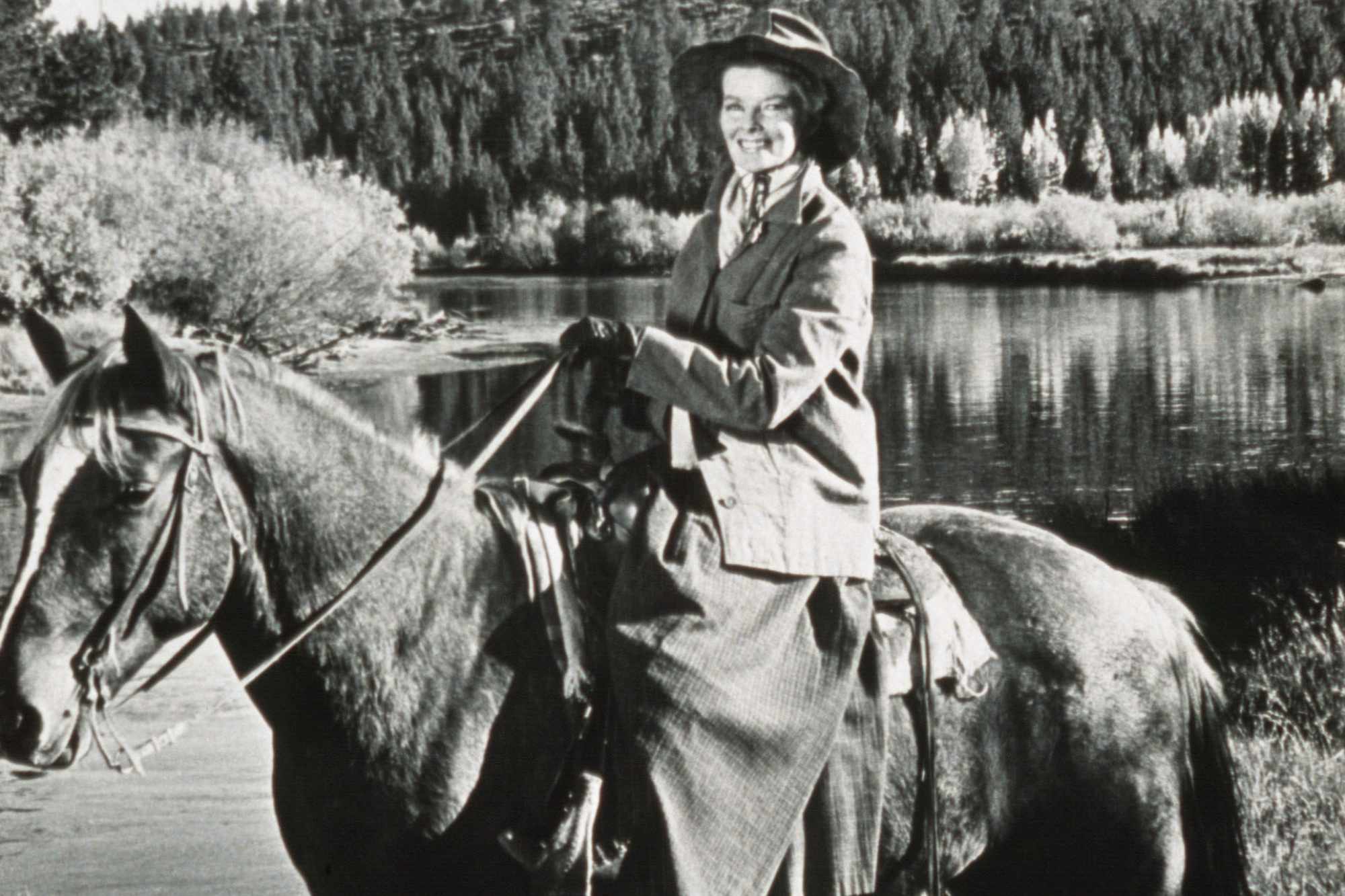 Katharine Hepburn | Sunset Boulevard/Corbis via Getty Images
Katharine Hepburn | Sunset Boulevard/Corbis via Getty Images
Rooster Cogburn (Wayne) is preceded by his reputation, but now he’s without a badge. He sets his sights on getting it back by hunting down a gang of bandits and their stolen shipment of explosives. Cogburn’s job is only made more difficult by the daughter of one of the gang’s victims, who demands to come along on the journey.
Rooster Cogburn is a sequel to the Oscar-winning True Grit, and it’s the only film that Hepburn and Wayne made together. Nevertheless, the Western movie star still brought Dollar along for the ride.
‘The Shootist’ (1976)
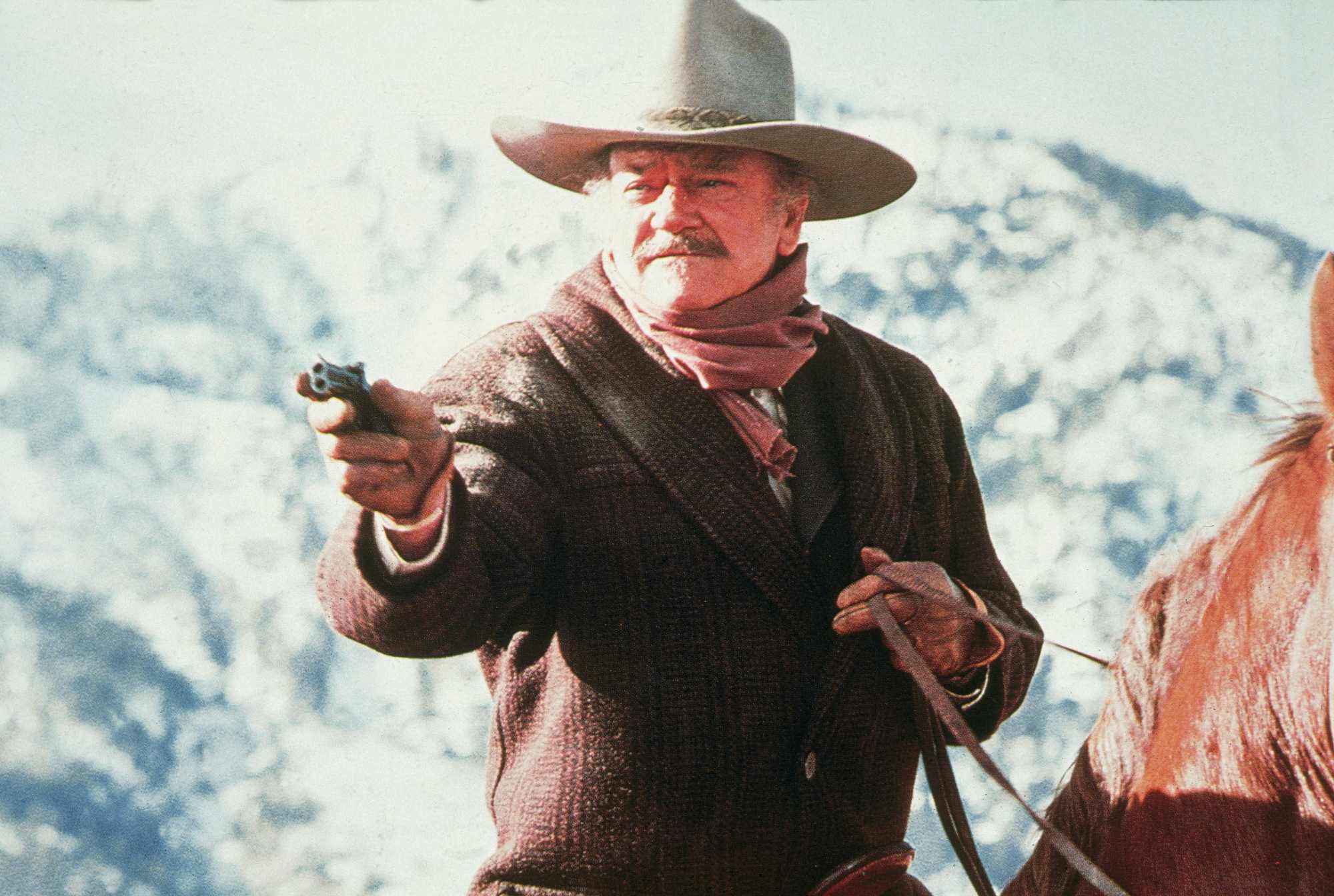 John Wayne as J.B. Books | Hulton Archive/Getty Images
John Wayne as J.B. Books | Hulton Archive/Getty Images
An aging gunfighter named J.B. Books (Wayne) is shocked to discover from the local doctor that he has cancer and doesn’t have very long left to live. He decides to rent a room from a widow (Lauren Bacall) and her son (Ron Howard), hoping to die in peace with dignity. However, people with questionable motives approach him, which ultimately leads him to want to go out with a bang.
The Shootist is the final movie that Wayne made before he died in 1979 from stomach cancer. It perfectly summed up his career in the Western genre, but perhaps it hit a little too close to home for some.


 Entertainment1 year ago
Entertainment1 year ago
 Entertainment1 year ago
Entertainment1 year ago
 Entertainment1 year ago
Entertainment1 year ago
 Entertainment1 year ago
Entertainment1 year ago
 Entertainment1 year ago
Entertainment1 year ago
 Entertainment1 year ago
Entertainment1 year ago
 Entertainment1 year ago
Entertainment1 year ago
 Entertainment1 year ago
Entertainment1 year ago
 John Wayne as John Chisum | Michael Ochs Archives/Getty Images
John Wayne as John Chisum | Michael Ochs Archives/Getty Images L-R: Bruce Cabot as Sam Sharpnose, Christopher Mitchum as Michael McCandles, John Wayne as Jacob McCandles, and Patrick Wayne as James McCandles | Michael Ochs Archives/Getty Images
L-R: Bruce Cabot as Sam Sharpnose, Christopher Mitchum as Michael McCandles, John Wayne as Jacob McCandles, and Patrick Wayne as James McCandles | Michael Ochs Archives/Getty Images John Wayne as Wil Andersen | Michael Ochs Archives/Getty Images
John Wayne as Wil Andersen | Michael Ochs Archives/Getty Images John Wayne as Lane | Silver Screen Collection/Getty Images
John Wayne as Lane | Silver Screen Collection/Getty Images Katharine Hepburn | Sunset Boulevard/Corbis via Getty Images
Katharine Hepburn | Sunset Boulevard/Corbis via Getty Images John Wayne as J.B. Books | Hulton Archive/Getty Images
John Wayne as J.B. Books | Hulton Archive/Getty Images


 John Wayne | Silver Screen Collection/Getty Images
John Wayne | Silver Screen Collection/Getty Images

